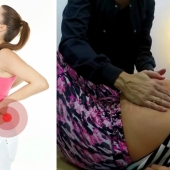An instrumental delivery is a delivery that is carried out by a doctor in a second stage of labor when your cervix is fully dilated. This may be necessary if you have been pushing for a long time and the baby has not been born. Sometimes babies show signs of distress in the second stage or mothers become very tired. A doctor may decide that it is the safest option and help you birth your baby. Different methods may be used.
This is a suction cup that is placed on your baby's head gentle traction is applied by the doctor at the same time as you are pushing. This is a team effort to deliver your baby with these deliveries your baby will have a round lump and may have a bruise on their head where the cups have been. This usually fades over the first 24 to 48 hours after their birth.
Forceps are like two metal salad servers with a face to cradle your baby's head these then lock together and the doctor will ask you to push whilst they apply gentle traction. This is a team effort to deliver your baby. If your baby is delivered by forceps then they may have marks on the side of their face these usually fade shortly after birth.
Sometimes the doctor may need to use more than one type of instrument to deliver your baby. Before applying any of these instruments the doctor will assess the position of the baby's head and decide which of the instruments is most appropriate. Your bladder needs to be empty for these procedures so a urinary catheter may be inserted as part of the assessment.
The doctor will decide whether to perform the delivery in the room or in theatre as there is a possibility that you may need a caesarean section. If the instrumental delivery is not successful, if any of these instruments are used doctor may need to perform an episiotomy.
This is a small cut that will allow more room for the delivery of your baby and reduce the risk of further damage to your perineum. Appropriate analgesia requirements will be discussed with you at the time. Your baby may require paracetamol for the first few days of life as they may have a headache.
- 1891 views













